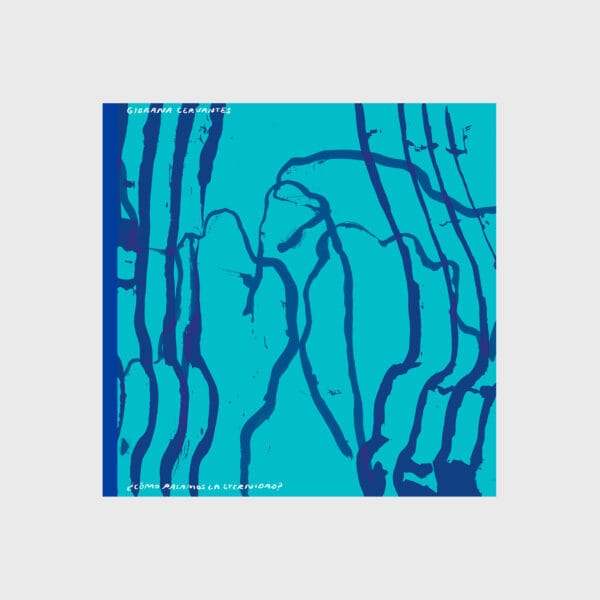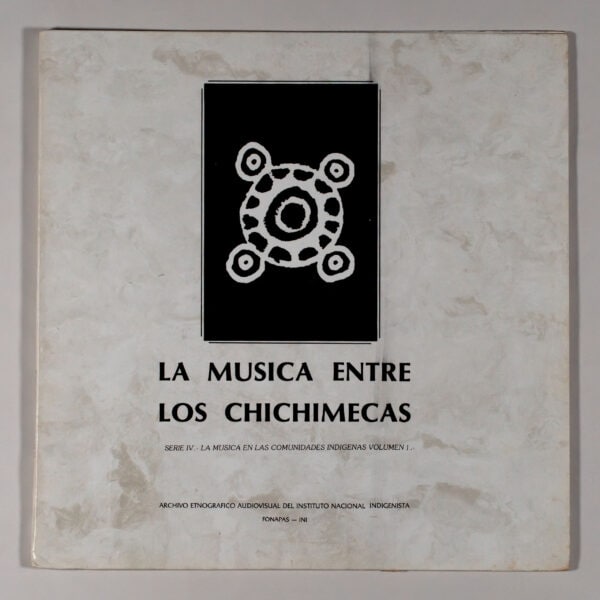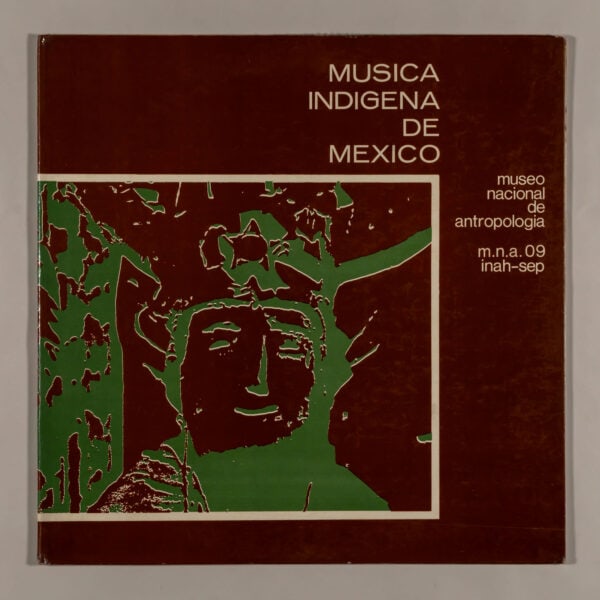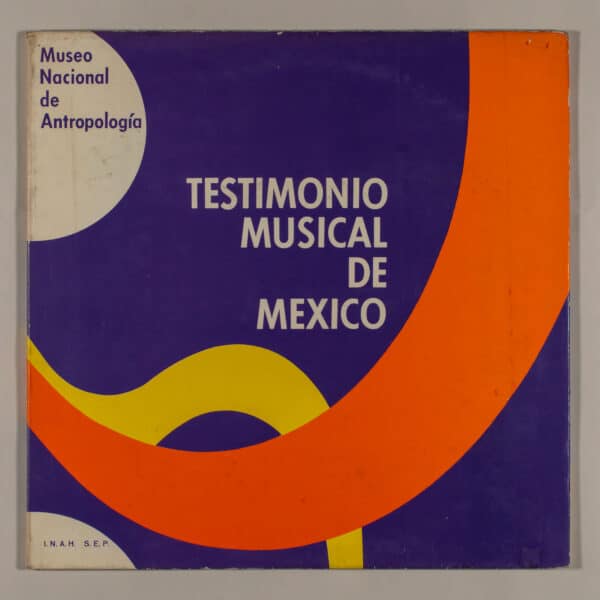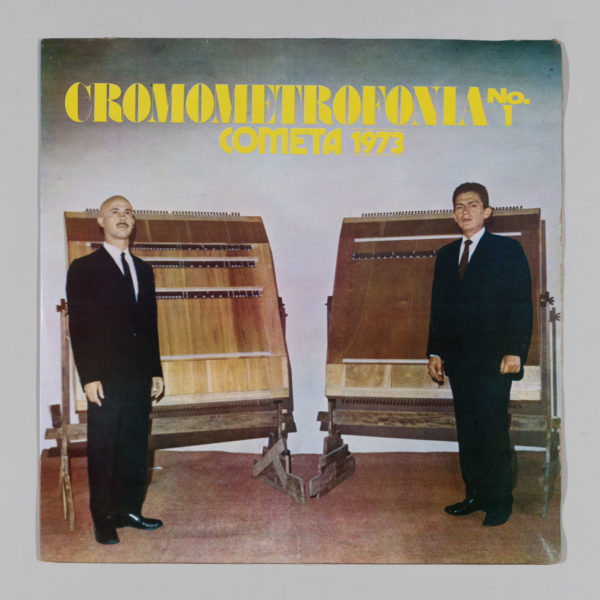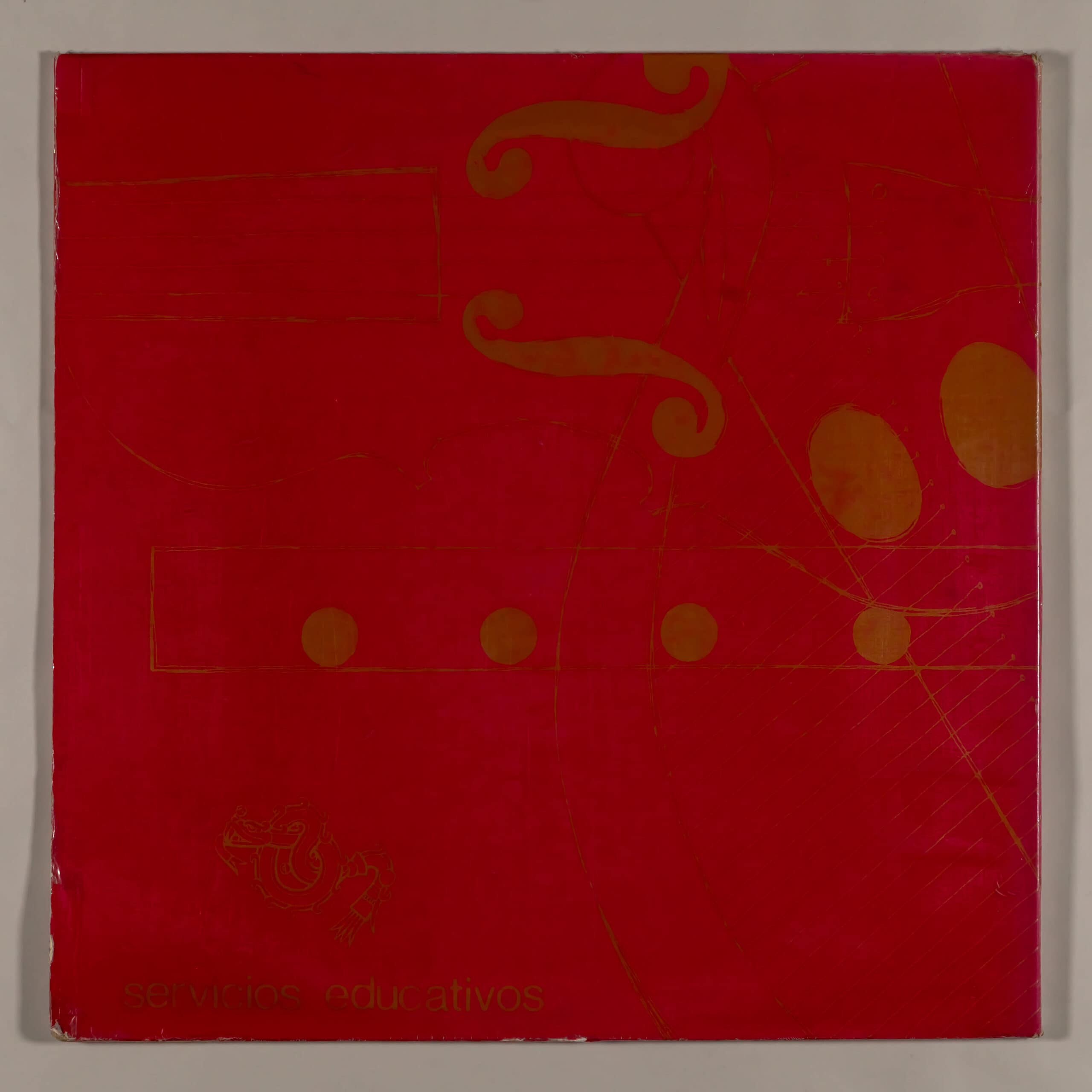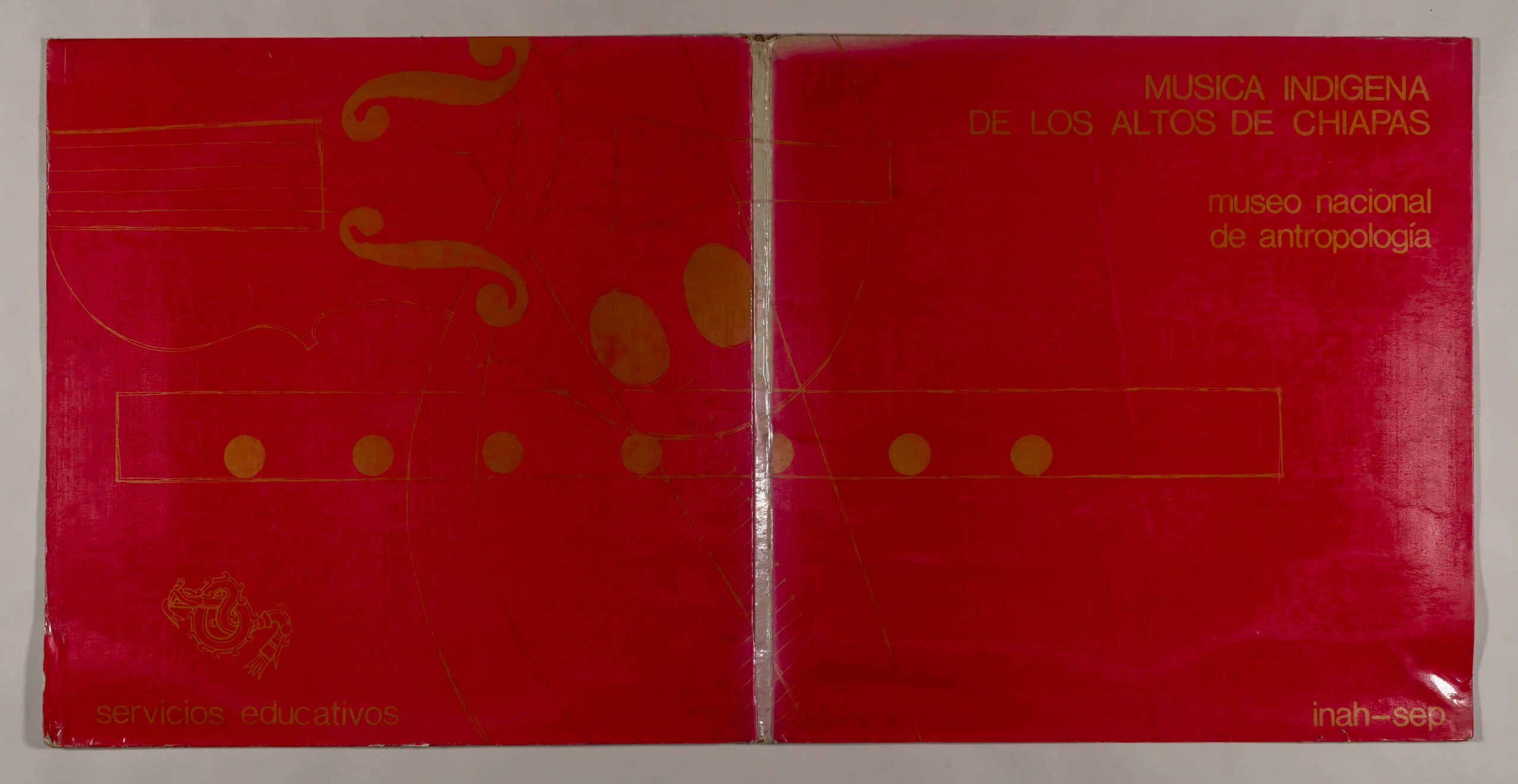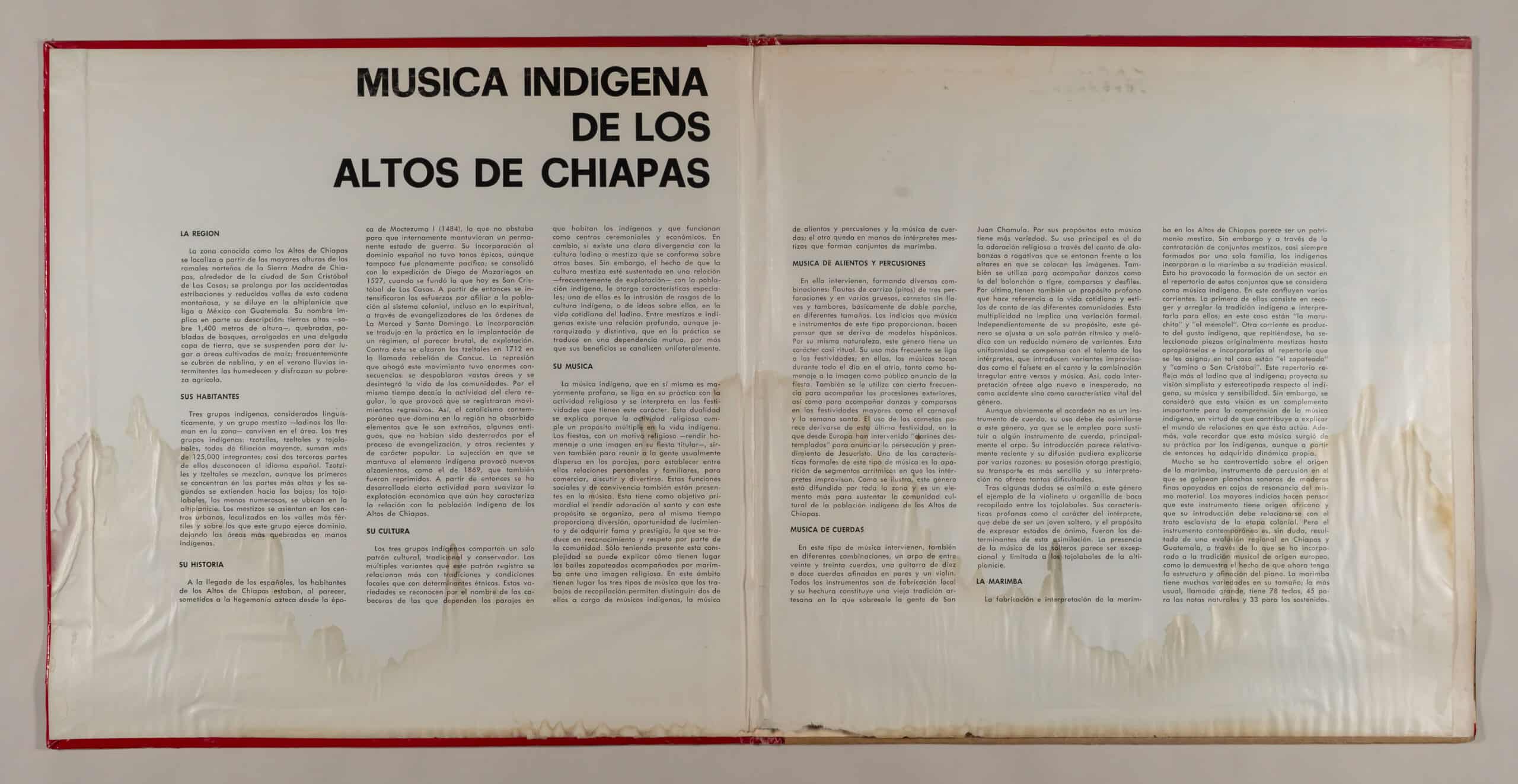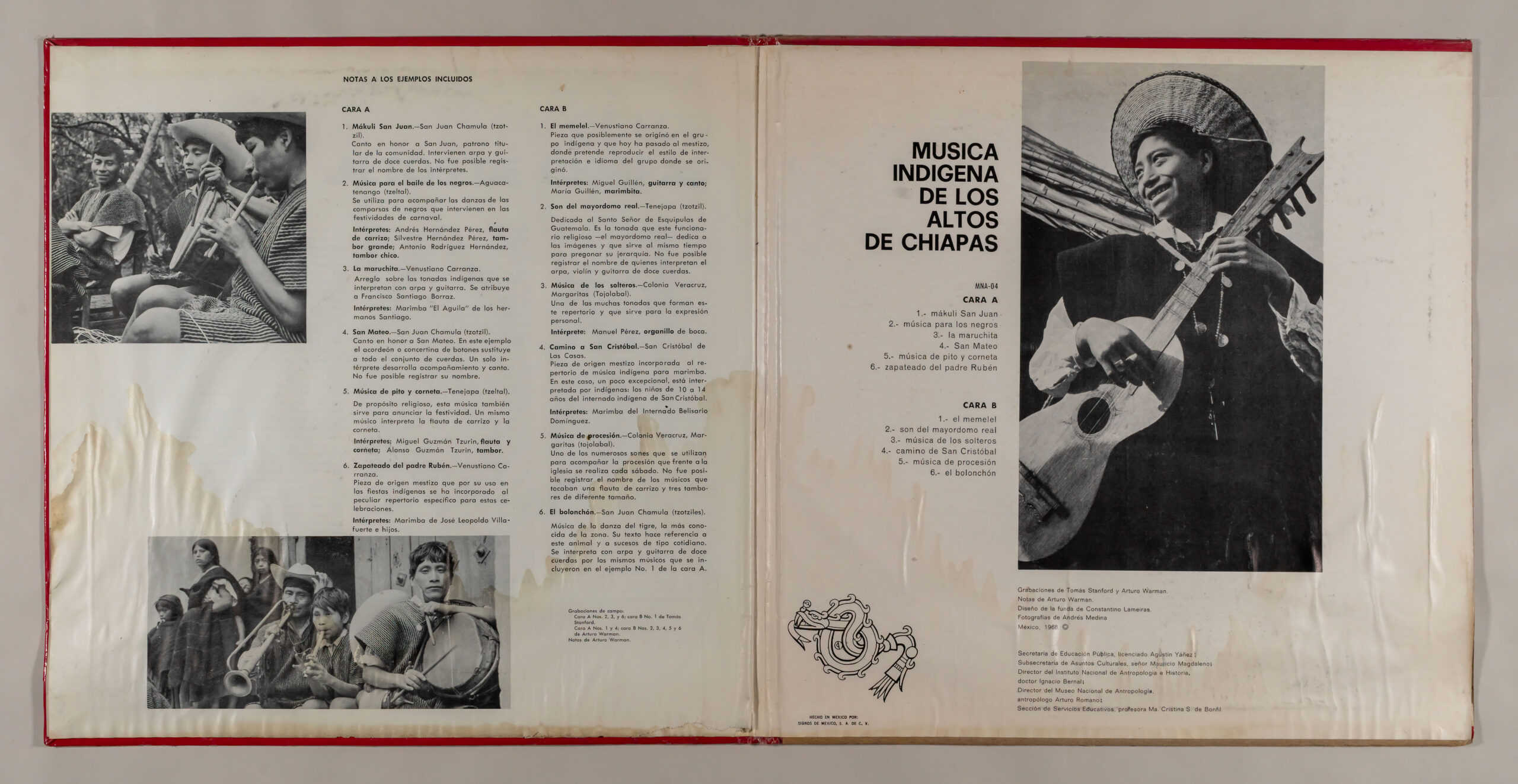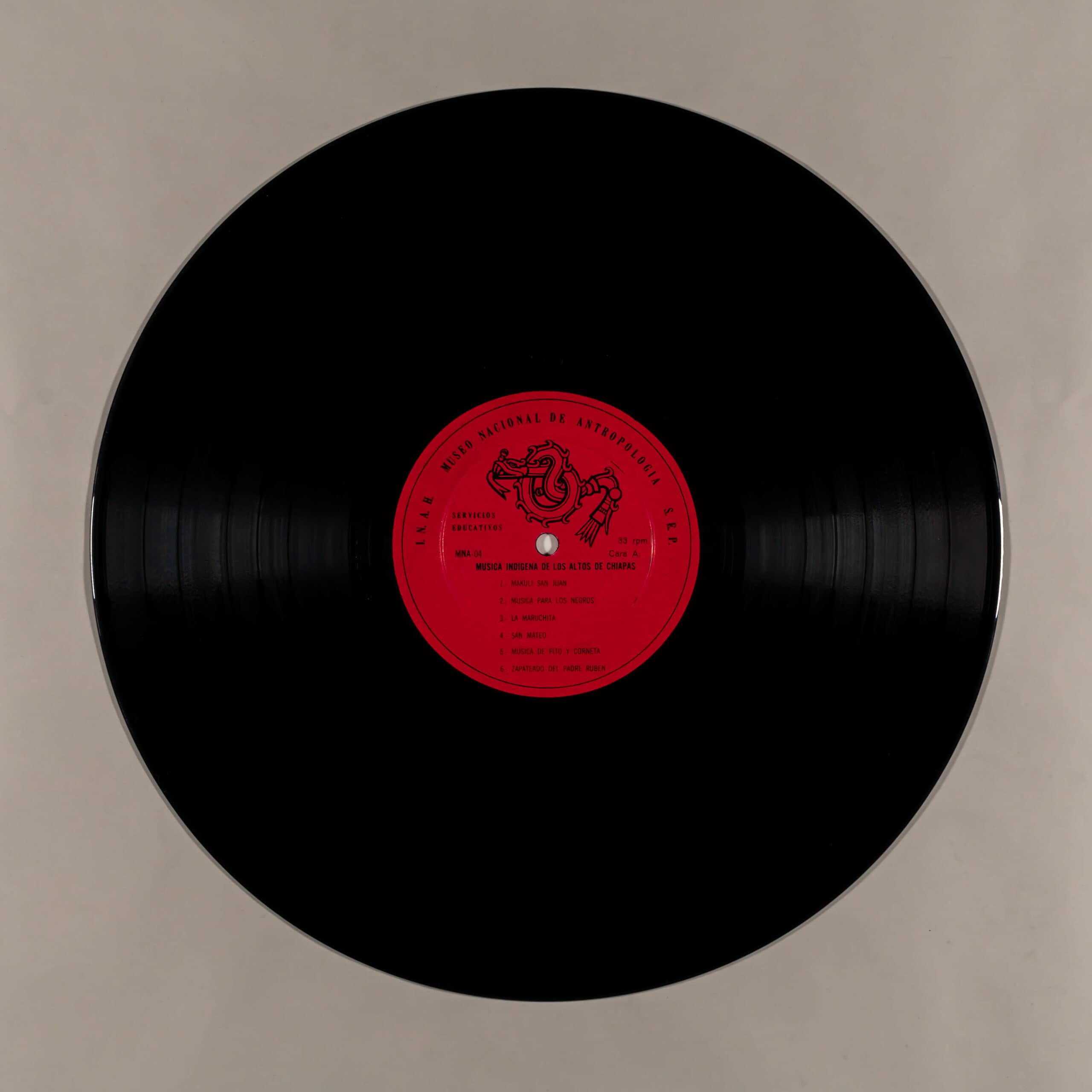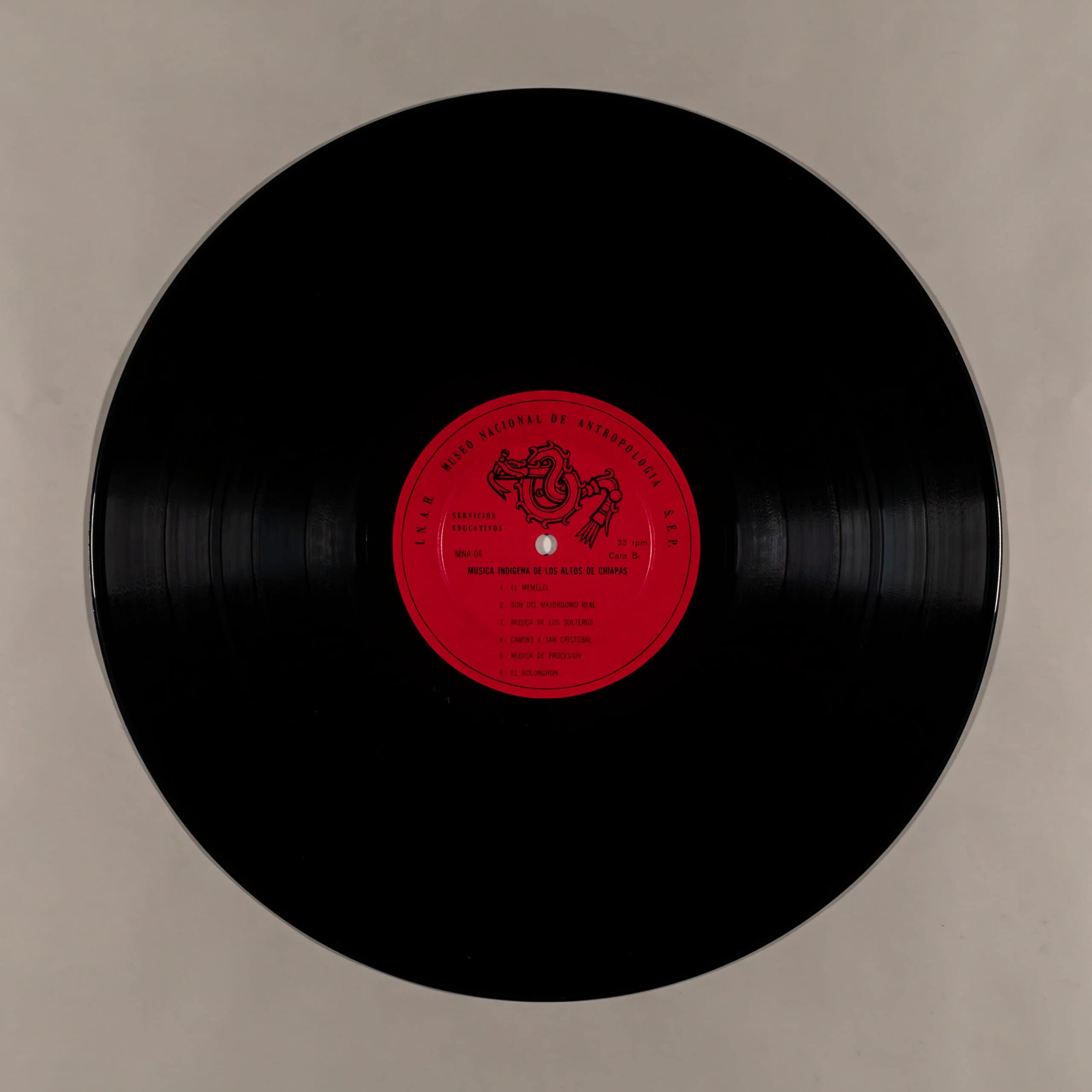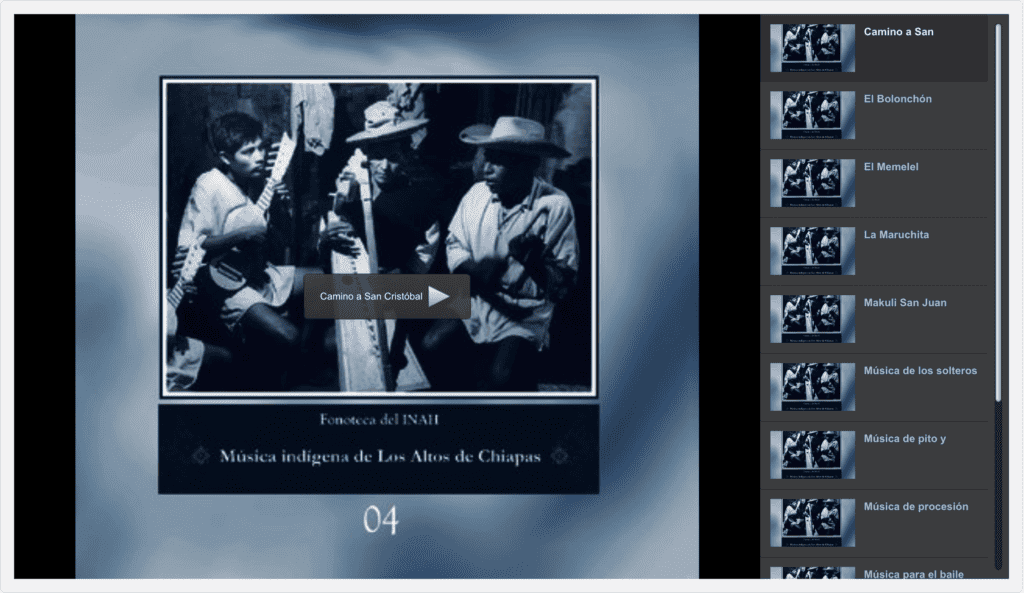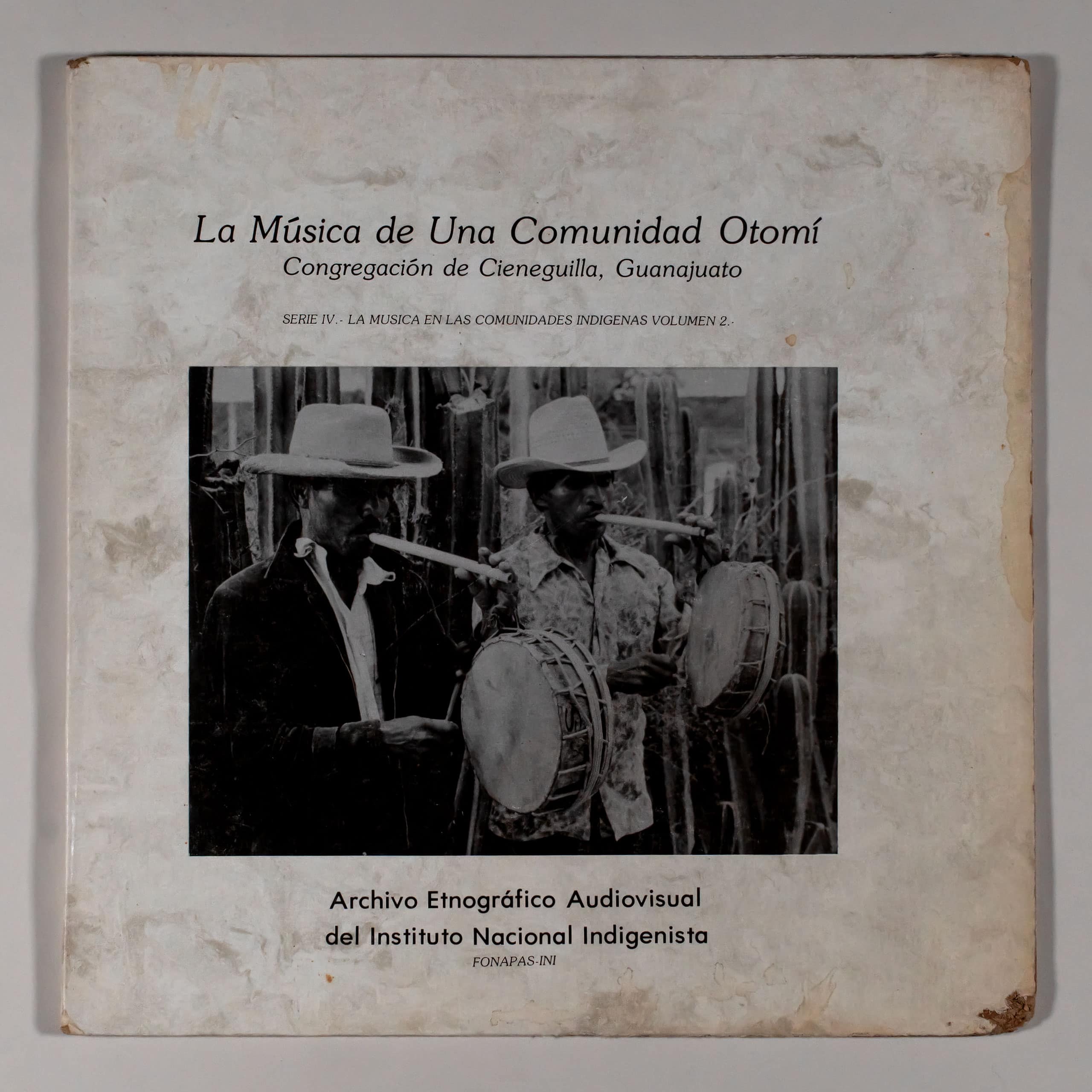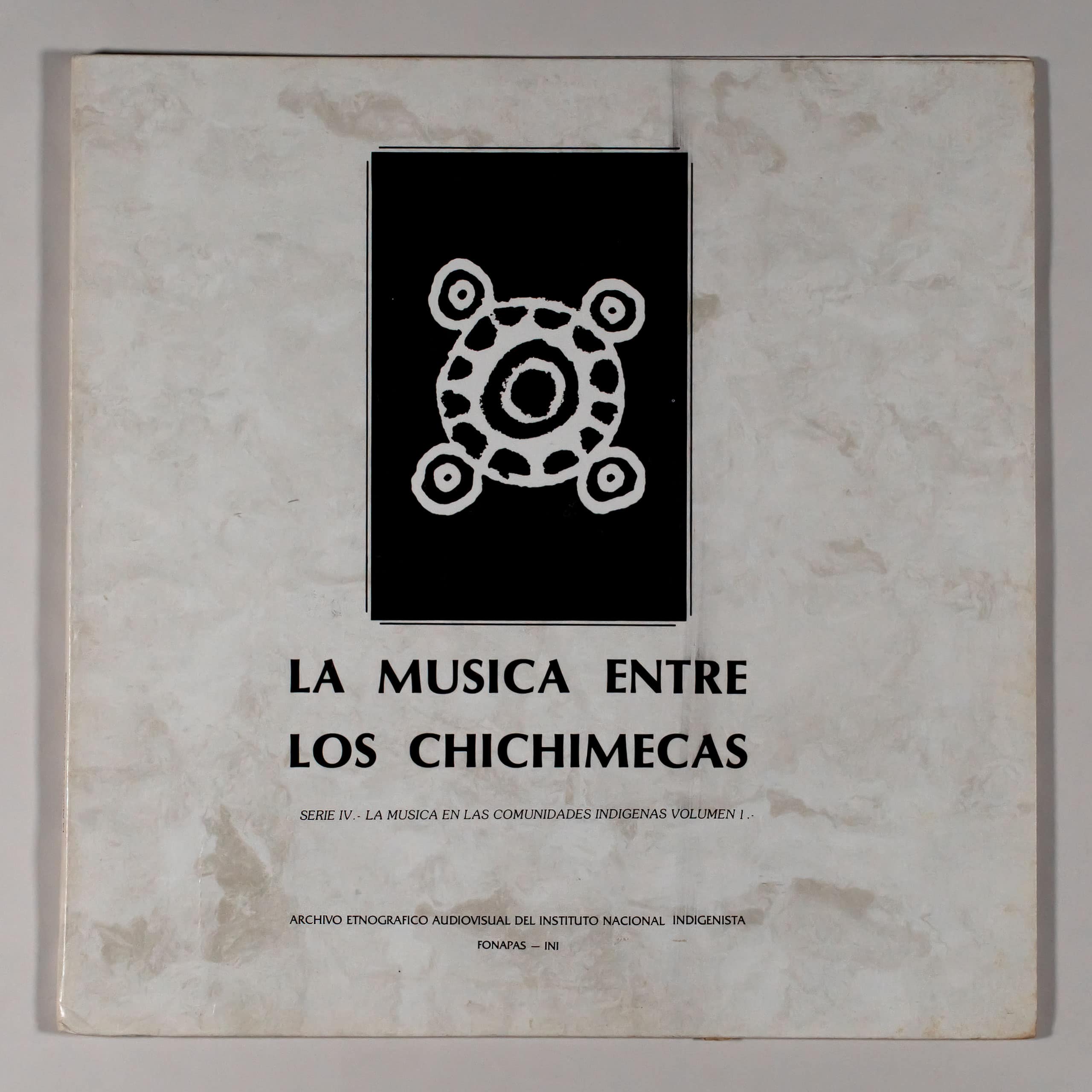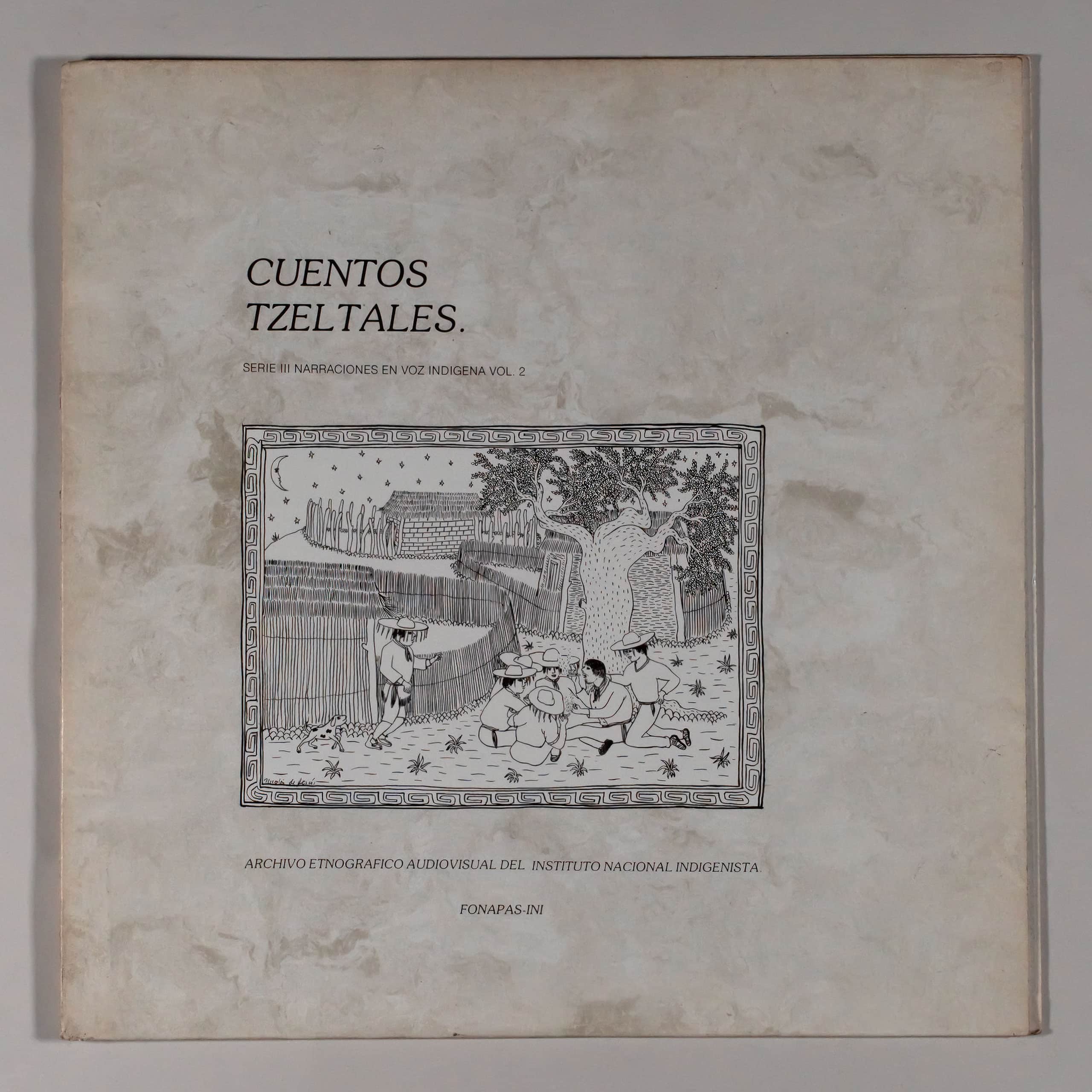INDIGENOUS MUSIC FROM THE HIGHLANDS OF CHIAPAS
INAH SEP
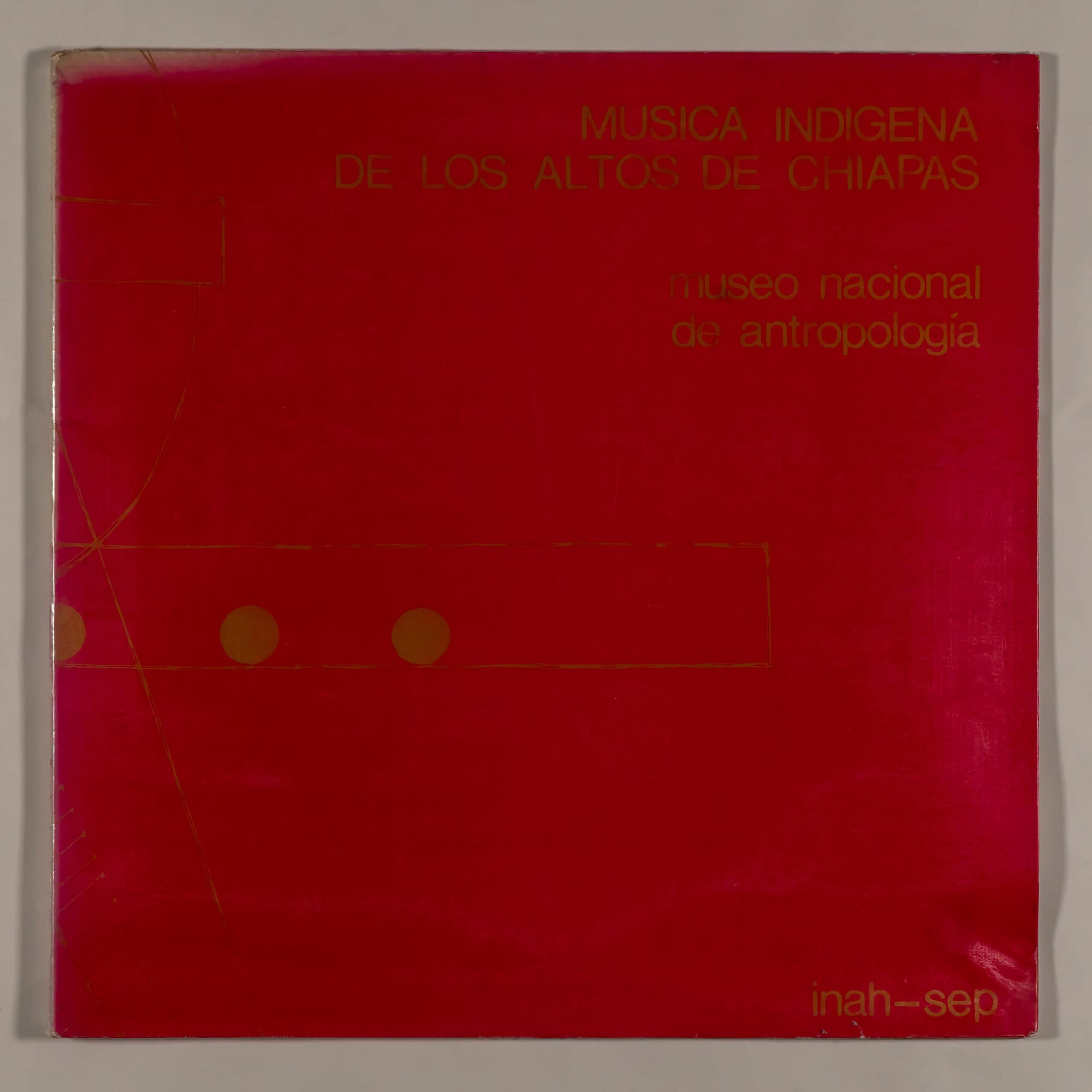
|
Label: INAH-SEP MNA-04 Released: 1968 |
Country: Mexico Genre: Latin Folk World & Country |
Info:
MÚSICA INDÍGENA DE LOS ALTOS DE CHIAPAS
THE REGION
The area known as the Altos de Chiapas is located from the highest heights of the northern branches of the Sierra Madre de Chiapas, around the city of San Cristóbal de Las Casas; it extends through the rugged foothills and small valleys of this mountain range, and dissolves in the plateau that connects Mexico with Guatemala. Its name partially implies its description: highlands –over 1,400 meters high–, broken, populated by forests, rooted in a thin layer of earth, which are suspended to give rise to cultivated areas of corn; they are frequently covered in fog, and in the summer intermittent rains moisten them and disguise their agricultural poverty.
THEIR HABITANTS
Three indigenous groups, considered linguistically, and a mestizo group – they are called ladinos in the area – live together in the area. The three indigenous groups: Tzotzils, Tzeltals and Tojolabales, all of Mayence affiliation, add up to more than 125,000 members; almost two thirds of them do not know the Spanish language. Tzotzil and Tzeltal are mixed, although the former are concentrated in the highest parts and the latter extend towards the lower parts; the tojolabales, the least numerous, are located on the plateau. The mestizos settle in the urban centers, located in the most fertile valleys and over which this group exercises control, leaving the most broken areas in indigenous hands.
HIS STORY
Upon the arrival of the Spaniards, the inhabitants of the Altos de Chiapas were, apparently, subjected to the Aztec hegemony since the time of Moctezuma I (1484), which did not prevent them from internally maintaining a permanent state of war. Its incorporation into Spanish rule did not have epic tones, although it was not fully peaceful either; It was consolidated with the expedition of Diego de Mazariegos in 1527, when what is now San Cristóbal de Las Casas was founded. From then on, efforts were intensified to affiliate the population to the colonial system, even spiritually, through evangelizers from the orders of La Merced and Santo Domingo. The incorporation resulted in practice in the implantation of an apparently brutal regime of exploitation. The Tzeltals rose against this in 1712 in the so-called Cancuc rebellion. The repression that stifled this movement had enormous consequences: vast areas were depopulated and community life disintegrated. At the same time, the activity of the regular clergy was declining, which caused regressive movements to be recorded. Thus, the contemporary Catholicism that dominates the region has absorbed elements that are foreign to it, some old, which had not been banished by the process of evangelization, and others recent and of a popular nature. The subjection in which the indigenous element was maintained caused new uprisings, such as that of 1869, which were also repressed. Since then, a certain activity has been developed to soften the economic exploitation that still characterizes the relationship with the indigenous population of the Altos de Chiapas.
YOUR CULTURE
The three indigenous groups share a single cultural pattern, traditional and conservative. The multiple variants that this pattern registers are related more to local traditions and conditions than to ethnic determinants. These varieties are recognized by the name of the heads on which the places inhabited by the indigenous depend and which function as ceremonial and economic centers. On the other hand, there is a clear divergence with the ladino or mestizo culture that is formed on other bases. However, the fact that the mestizo culture is based on a relationship –frequently of exploitation– with the indigenous population, gives it special characteristics; one of them is the intrusion of features of indigenous culture, or ideas about them, into the daily life of the ladino. Between mestizos and indigenous people there is a deep relationship, although hierarchical and distinctive, which in practice translates into mutual dependence, even though their benefits are channeled unilaterally.
ITS MUSIC
Indigenous music, which in itself is mostly secular, is linked in its practice with religious activity and is performed in festivities that have this character. This duality is explained because religious activity fulfills a multiple purpose in indigenous life. The festivities, with a religious motive – to pay homage to an image in its titular festival – also serve to bring together people who are usually dispersed in the places, to establish personal and family relationships among them, to trade, discuss and have fun. These social and coexistence functions are also present in music. This has as its primary objective the worship of the saint and it is organized for this purpose, but at the same time it provides fun, an opportunity to shine and to acquire fame and prestige, which translates into recognition and respect from the community. Only keeping this complexity in mind can we explain how the zapateado dances take place accompanied by marimba before a religious image. The three types of music that the compilation works allow to distinguish take place in this area: two of them by indigenous musicians, music of breaths and percussion and string music; the other remains in the hands of mestizo performers who form marimba ensembles.
MUSIC OF BREATH AND PERCUSSIONS
They take part in it, forming various combinations: reed flutes (whistles) with three perforations and in various thicknesses, keyless bugles and drums, basically double-headed, in different sizes. The indications that music and instruments of this type provide, suggest that it derives from Hispanic models. By its very nature, this genre has an almost ritual character. Its most frequent use is linked to festivities; in them, the musicians play throughout the day in the atrium, both as a tribute to the image and public announcement of the party. It is also used with some frequency to accompany external processions, as well as to accompany dances and comparsas in major festivities such as carnival and Holy Week. The use of bugles seems to derive from this last festivity, in which “intemperate bugles” have intervened from Europe to announce the persecution and arrest of Jesus Christ. One of the formal characteristics of this type of music is the appearance of arrhythmic segments in which the performers improvise. As illustrated, this genre is spread throughout the area and is one more element to sustain the cultural community of the indigenous population of the Altos de Chiapas.
STRING MUSIC
Also in different combinations, a harp with between twenty and thirty strings, a guitar with ten or twelve strings tuned in pairs and a violin take part in this type of music. All the instruments are locally made and their making constitutes an old artisan tradition in which the people of San Juan Chamula excel. For its purposes this music has more variety. Its main use is that of religious worship through the singing of praises or prayers that are intoned in front of the altars on which the images are placed. It is also used to accompany dances such as bolonchón or tigre, troupes and parades. Finally, they also have a secular purpose that refers to the daily life and singing styles of the different communities. This multiplicity does not imply a formal variation. Regardless of its purpose, this genre sticks to a single rhythmic and melodic pattern with a small number of variations. This uniformity is compensated by the talent of the performers, who introduce improvised variants such as the falsetto in the song and the irregular combination between verses and music. Thus, each interpretation offers something new and unexpected, not as an accident but as a vital characteristic of the genre.
Although obviously the accordion is not a string instrument, its use must be assimilated to this genre, since it is used to replace some string instrument, mainly the harp. Its introduction seems relatively recent and its diffusion could be explained by several reasons: its possession grants prestige, its transport is easier and its interpretation does not offer so many difficulties.
After some doubts, the example of the violin or mouth organ compiled among the Tojolabals was assimilated to this genre. Its profane characteristics such as the character of the interpreter, who must be a young bachelor, and the purpose of expressing states of mind, were the determinants of this assimilation. The presence of the music of the singles seems to be exceptional and limited to the Tojolabales of the highlands.
THE MARIMBA
The manufacture and interpretation of the marimba in the Altos de Chiapas seems to be a mestizo heritage. However, and through the hiring of mestizo groups, almost always formed by a single family, the indigenous people incorporate the marimba into their musical tradition. This has caused the formation of a sector in the repertoire of these ensembles that is considered as indigenous music. Several streams converge here. The first one consists of collecting and arranging the indigenous tradition and interpreting it for them; in this case there are “la maruchita” and “el memeelel”. Another current is the product of indigenous taste, which, repeating itself, has selected originally mestizo pieces until they are appropriated and incorporated into the repertoire assigned to them; in this case there are “el zapateado” and “walk to San Cristóbal”. This repertoire reflects more the ladino than the indigenous; projects its simplistic and stereotyped vision regarding the indigenous, their music and sensitivity. However, it was considered that this vision is an important complement for the understanding of indigenous music, since it helps to explain the world of relationships in which it operates. In addition, it is worth remembering that this music arose from its practice by the indigenous people, although since then it has acquired its own dynamics.
There has been much controversy about the origin of the marimba, a percussion instrument in which sound plates of fine wood supported by resonance boxes of the same material are struck. The greatest indications suggest that this instrument has African origin and that its introduction must be related to the slave treatment of the colonial period. But the contemporary instrument is, without a doubt, the result of a regional evolution in Chiapas and Guatemala, through which it has been incorporated into the musical tradition of European origin, as evidenced by the fact that it now has the structure and tuning of the piano. . The marimba has many varieties in its size; the most common, called grande, has 78 keys, 45 for natural notes and 33 for sharps.
NOTES TO INCLUDED EXAMPLES
FACE A
1. Mákuli San Juan.–San Juan Chamula (Tzotzil).
I sing in honor of San Juan, patron saint of the community. Harp and twelve-string guitar take part. It was not possible to record the names of the interpreters.
2. Music for the black dance.–Aguacatenango (tzeltal).
It is used to accompany the dances of the black troupes that take part in the carnival festivities.
Performers: Andrés Hernández Pérez, reed flute; Silvestre Hernández Pérez, big drum; Antonio Rodríguez Hernández, small drummer.
3. The maruchita.–Venustiano Carranza.
Arrangement on the indigenous tunes that are interpreted with harp and guitar. It is attributed to Francisco Santiago Borraz.
Performers: Marimba “El Águila” by the Santiago brothers.
4. San Mateo.–San Juan Chamula (Tzotzil).
I sing in honor of Saint Matthew. In this example the button accordion or concertina replaces the entire set of strings. A single interpreter develops accompaniment and singing. It was not possible to register his name.
5. Whistle and bugle music.–Tenejapa (tzeltal).
Of religious purpose, this music also serves to announce the festivity. The same musician plays the reed flute and the cornet.
Performers: Miguel Guzmán Tzurin, flute and cornet; Alonso Guzman Tzurin, drummer.
6. Zapateado of Father Rubén.–Venustiano Carranza.
Piece of mestizo origin that, due to its use in indigenous festivities, has been incorporated into the peculiar specific repertoire for these celebrations.
Performers: Marimba by José Leopoldo Villafuerte and sons.
FACE B
1. The memeel.–Venustiano Carranza.
He pieces that he possibly originated in the indigenous group and that today he has passed to the mestizo, where he intends to reproduce the style of interpretation and language of the group where he originated.
Performers: Miguel Guillén, guitar and singing; Maria Guillen, marimba.
2. They are from the royal mayordomo.–Tenejapa (tzotzil).
Dedicated to the Holy Lord of Esquipulas of Guatemala. It is the tune that this religious official –the royal mayordomo– dedicates to the images and that serves at the same time to proclaim his hierarchy. It was not possible to record the name of those who play the harp, violin and twelve-string guitar.
3. Music of the singles.–Colonia Veracruz, Margaritas (Tojolabal).
One of the many tunes that make up this repertoire and that is used for personal expression.
Performer: Manuel Pérez, mouth organ.
4. Road to San Cristóbal.–San Cristóbal de Las Casas.
Piece of mestizo origin incorporated into the repertoire of indigenous music for marimba. In this case, somewhat exceptionally, it is performed by indigenous people: children between the ages of 10 and 14 at the indigenous boarding school in San Cristóbal.
Performers: Marimba from Belisario Domínguez Boarding School.
5. Music of procession.–Colonia Veracruz, Margaritas (tojolabal).
One of the numerous sounds that are used to accompany the procession that takes place in front of the church every Saturday. It was not possible to record the name of the musicians who played a reed flute and three drums of different sizes.
6. The Bolonchón.–San Juan Chamula (Tzotzil).
Music of the tiger dance, the best known in the area. His text refers to this animal and to everyday events. It is played on harp and twelve-string guitar by the same musicians that were included in example No. 1 on side A.
Field recordings:
Side A No. 2, 3, and 6; Tomas B-side No. 1
Stanford.
Side A No. 1 and 4; side B No. 2, 3, 4, 5 and 6
by Arthur Warren.
Notes by Arthur Warman.
INDIGENOUS MUSIC FROM THE HIGHLANDS OF CHIAPAS
MNA-04
FACE A
1. makuli San Juan
2.- music for blacks
3.- the maruchita
4.- Saint Matthew
5.- whistle and bugle music
6.- zapateado of Father Rubén
FACE B
1.- the memeel
2.- they are from the royal butler
3.- singles music
4.- road to San Cristóbal
5.- procession music
6.- the bolonchón
Recordings by Tomás Stanford and Arturo Warman.
Notes by Arthur Warman.
Cover design by Constantino Lameiras.
Photographs by Andres Medina
Mexico, 1968. ©
Secretary of Public Education, licensed. Agustin Yanez:
Undersecretary for Cultural Affairs, Mr. Mauricio Magdaleno;
Director of the National Institute of Anthropology and History,
Dr. Ignacio Bernal;
Director of the National Museum of Anthropology,
anthropologist Arturo Romano;
Educational Services Section, Professor Ma. Cristina S. de Bonfil
Tracklist:
INDIGENOUS MUSIC FROM THE HIGHLANDS OF CHIAPAS
SIDE 1
- A1 Mákuli San Juan.–San Juan Chamula (Tzotzil).
Interpreters: ? - A2 Music for the Dance of the Negroes.–Aguacatenango (Itzeltal).
Performers: Andrés Hernández Pérez, reed flute; Silvestre Hernández Pérez, big drum; Antonio Rodríguez Hernández, small drummer. - A3 La Maruchita.–Venustiano Carranza.
Performers: Marimba “El Águila” by the Santiago brothers. - A4 San Mateo.–San Juan Chamula (Tzotzil).
Interpreters: ? - A5 Whistle And Bugle Music.–Tenejapa (Tzotzil).
Performers: Miguel Guzmán Tzurin, flute and cornet; Alfonso Guzman Tzurin, drummer. - A6 Zapateado Of Father Ruben.–Venustiano Carranza.
Performers: Marimba by José Leopoldo Villafuerte and sons.
SIDE 2
- B1 The Memelel.–Venustiano Carranza.
Performers: Miguel Guillén, guitar and singing; Maria Guillen, marimba. - B2 They are from the Royal Mayordomo.–Tenejapa (Tzotzil).
Interpreters: ? - B3 Music Of The Singles.–Colonia Veracruz, Margaritas (Tojolabal).
Interpreters: Manuel Pérez, mouth organ. - B4 Road to San Cristobal.–San Cristobal de Las Casas.
Performers: Marimba from Belisario Domínguez Boarding School. - B5 Procession Music.–Colonia Veracruz, Margaritas (Tojolabal).
Interpreters: ? - B6 El Bolonchón.–San Juan Chamula (Tzotziles).
Interpreters: ?
Credits:
Field recordings by Tomás Stanford and Irene and Arturo Warman.
Notes by Arthur Warman.
Cover design by Constantino Lameiras.
Photographs by Andres Medina.
Arturo Warman: Engraver, Adjunct Material Writer
Victor Acevedo Martínez: Editor
Martín Audelo Chícharo: Editor
Guadalupe Loyola Zárate: Editor
Benjamín Muratalla: Editor, Director
Irene Vázquez Valle: Editor
H. Alejandro Castellanos Garrido: Editor, Researcher
Gabriela González Sánchez: Editor
Jazmín Rangel Evaristo: Editor
Guillermo Pous Navarro
Hugo De la Rosa Barajas
Alfredo Huertero Casarrubias: Illustrator
Guillermo Santana Ramírez: Designer
Andrés Hernández Pérez: Musician
Silvestre Hernández Pérez: Musician
Antonio Rodríguez Hernández: Musician
Marimba “El Águila” by the Santiago brothers: Musician
Miguel Guzmán de Tzurin: Musician
Alonso Guzmán Tzurin: Musician
Marimba by José Leopoldo Villafuerte and sons: Musician
Miguel Guillén: Musician
María Guillén: Musician
Manuel Pérez: Musician
Belisario Domínguez Boarding School Marimba: Musician

